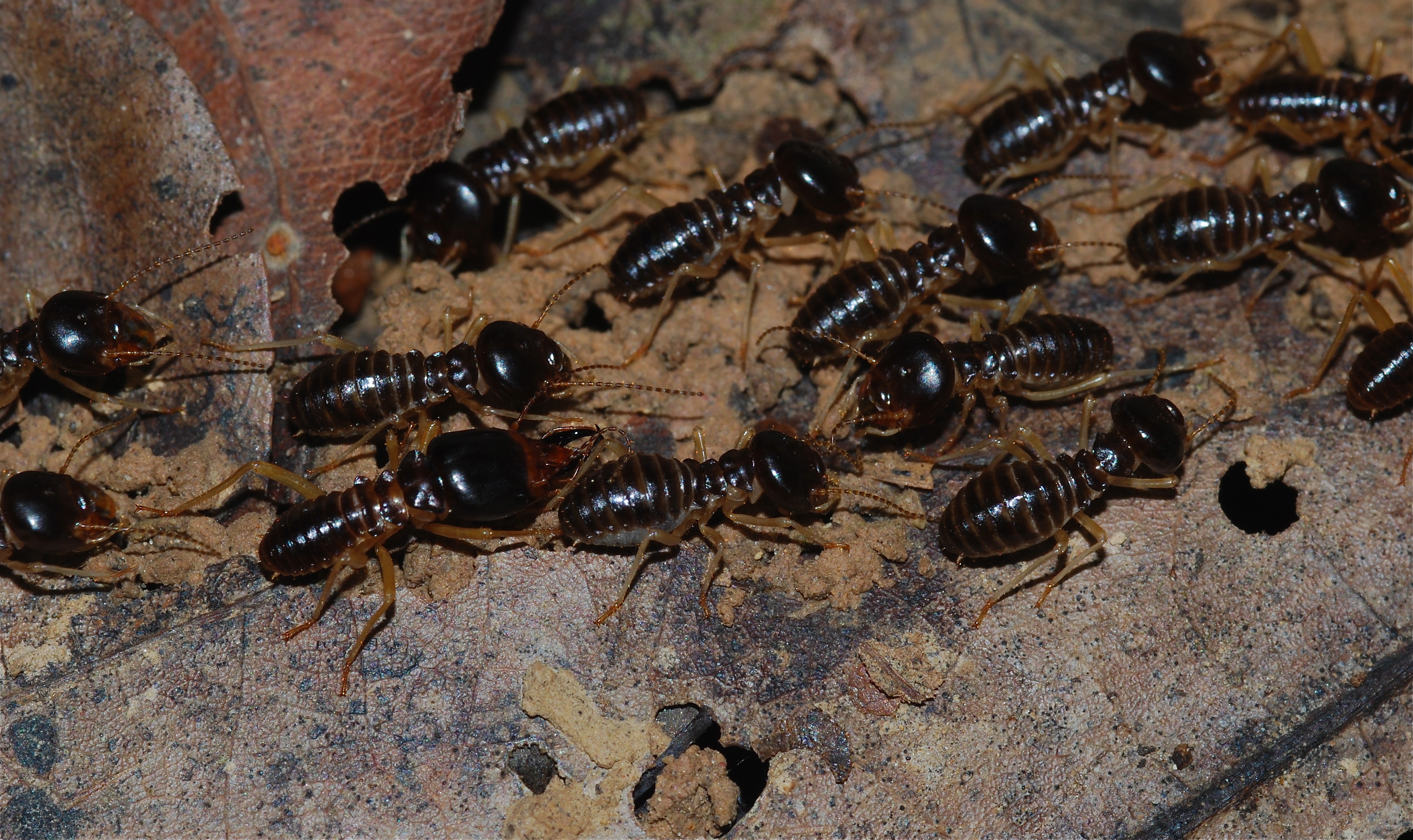Termites are horrible pests, most of them blind and not seasonal, that infest a home and eat away at items made from wood or cellulose. They consume dead plant material and cellulose, such as wood, leaf matter, soil, and animal waste. Of the thousands of species of termites, five common types of termites exist such as drywood, conehead, damp wood, subterranean, and Formosan. The most common type that people identify with is drywood termites which feed on wood products.
Termites destroy soil structures and add to the problem of erosion. Termites serve a purpose, surviving in a variety of climates, such as subtropical and tropical regions. They recycle wood and plant matter which is important to the ecological cycle. They can colonize on most land areas except Antarctica. Termites, like cockroaches around since the beginning of human life as we know it, were once classified separate from cockroaches. However, recent studies indicate that termites come from close ancestors of cockroaches evolving during the Jurassic or Triassic periods millions of years ago. Existing are 3,106 species of termites. Similar to bees, wasps, and ants, termites divide and conquer their work by using castes that consist of sterile female and male “workers” or “soldiers”. Termite colonies range in size from a few hundred to millions. Now, that’s a scary thought.
Several predators including 65 species of birds and 19 types of mammals seek termites. They are hunted by arthropods like ants, centipedes, cockroaches (distant relatives), crickets, dragonflies, scorpions, spiders, reptiles (lizards), and amphibians (frogs and toads). Also, two species of spiders, from the family Ammoxenidae, find termites to be a tasty treat. The warning signs of a termite infestation include the following: when struck, solid wood sounds hollow, mud trails found on or nearby to exterior walls, and visible dry bubbled paint on furniture are all evident warning signs of a termite infestation. Termites feed upon dead plant materials, wood fixtures containing cellulose (sap) which termites find to be a delicious meal.
Use a professional exterminator service to destroy termites. Here is a list of home remedies toxic for termites: spray soapy water or use orange oil. Wet cardboard traps them and once trapped they can be sprayed with an insecticide or soapy water. Try using clove oil spray or a canola oil and water spray mixture. Garlic oil effectively destroys a large infestation. Mix garlic oil with water and spray an infested area with it or mix garlic oil with neem oil and tobacco. Aloe Vera gel and boric acid, non-toxic to humans, quickly kills termites. Petroleum jelly applied to furniture drives them away. Spray a mixture of white vinegar and lemon on a small infested area. Use a spray solution of salt and water. An age-old technique used to get rid of termites is to use sunlight exposure. Termites are averse to high temperature and extreme heat. Avoid using wood mulch for landscaping and plants. Remove old stumps and dead wood from your yard and avoid using it for landscaping purposes.


